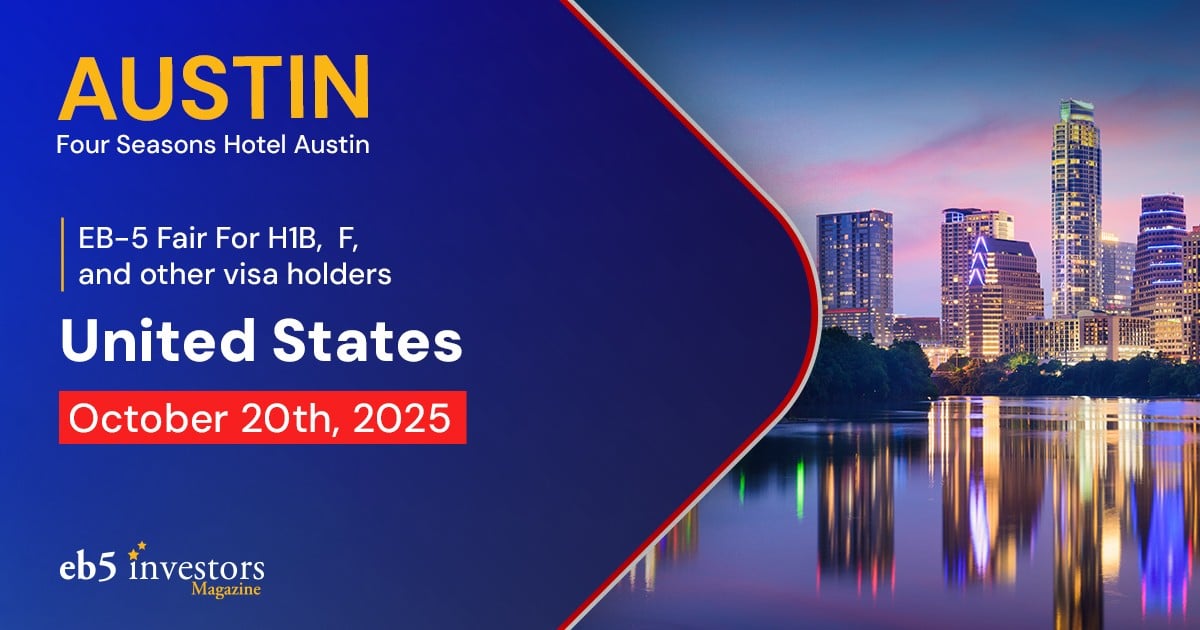
In a recent development, the U.S. Department of Homeland Security (DHS) has proposed a rule change that could have significant implications for current and new international students studying in the United States.
The change could also impact how these students decide to transition to the EB-5 investor visa program.
“The proposed amendment will have the greatest impact on EB-5 applicants who are in F-1 status, particularly those born in China, as the set-aside EB-5 categories are expected to face possible backlogs for them,” said U.S. immigration attorney Ying Lu.
What is USCIS proposing to change?
The DHS is proposing to limit the length of stay for nonimmigrant academic students, exchange visitors, and representatives of foreign information media in the United States. The move also affects Optional Practical Training (OPT), a period during which international students with an F-1 visa are permitted to work in the U.S.
The goal is to curb visa abuse and enhance the government’s ability to vet and oversee these individuals.
The new rule sets a:
- A maximum of 4-year limit to the “duration of status” (DS) for students and exchange visitors.
- 240 days for media representatives (with a possible extension based on their assignment length).
If it is approved as proposed, all these individuals would potentially need to apply for extensions with USCIS for longer stays.
Potential impact on EB-5 applications
Many students transition to the EB-5 visa as they near the completion of their studies, seeking permanent residency. Some even continue enrolling in programs at the same degree level while waiting for their application to be processed.
“For example, completing one master’s degree and then enrolling in another master’s program, while awaiting I-526E or I-485 adjudication,” says Lu. “This strategy enables EB-5 applicants to remain in the U.S. and file for adjustment of status, thereby avoiding leaving the U.S. and accessing the benefits of a pending I-485, such as advance parole for international travel and an EAD for work authorization. These benefits are particularly critical when visa backlogs for the EB-5 categories arise.”
This strategy no longer would apply if the proposal is approved as it is, she cautions.
“This change heightens the risk of status gaps and may directly jeopardize the ability of EB-5 applicants to pursue adjustment of status”, Lu concludes.
How the change might attract more EB-5 applications
Nonetheless, according to EB-5 attorney Tony Wong, the new rules could still “bring a positive impact on EB-5.”
He adds that terminating DS and OPT and fixing the 4-year F-1s will stimulate more of these students to seek alternatives earlier for lawfully staying in the U.S., especially for an Employment Authorization Document (EAD).
“EB-5 is the best option for them because of concurrent filing. At the same time, H-1B selection is proposed to base on salary and skills, so it further accelerates more F-1 students participate EB-5,” Wong says.
Concurrent filing is a procedure established by immigration law that allows U.S. visa holders to apply for the EB-5 visa by submitting the I-526E (EB-5 petition) and I-485 (adjustment of status) petitions at the same time, allowing them to legally remain in the U.S. and apply for work and travel authorization while their EB-5 case is pending.
The proposed rule has been published in the Federal Register and is open for public comment until Oct. 27. After the deadline, the DHS will review the feedback. They may choose to make revisions based on the comments and will then publish the final rule in the same registry.
EB-5 attorney Peter Zhang concludes: “We still need to await the final rule, and significant opposition is expected during the comment period. However, even if the rule is partially softened, the trend toward stricter F-1 compliance and greater uncertainty for international students is clear. Since the EB-5 program remains a viable option in this evolving policy landscape, I anticipate demand to strengthen as these regulatory shifts take shape.”
Separately, the screening and vetting process for F, M, and J non-immigrant visas has increased. Applicants are now subject to expanded scrutiny, with a particular focus on their social media activity.
DISCLAIMER: The views expressed in this article are solely the views of the author and do not necessarily represent the views of the publisher, its employees. or its affiliates. The information found on this website is intended to be general information; it is not legal or financial advice. Specific legal or financial advice can only be given by a licensed professional with full knowledge of all the facts and circumstances of your particular situation. You should seek consultation with legal, immigration, and financial experts prior to participating in the EB-5 program Posting a question on this website does not create an attorney-client relationship. All questions you post will be available to the public; do not include confidential information in your question.








